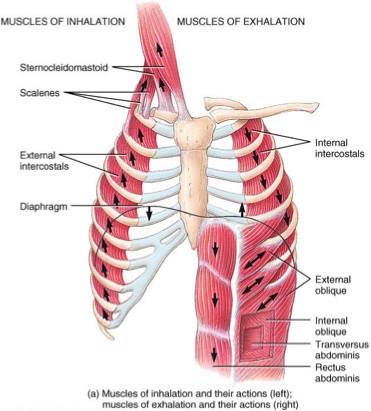The Function of Yoga Breathing (Deep Breathing)
Breath is life; so to breathe is to live. Consequently, Pranayama Deep Breathing sets the stage for the Bikram yoga practice. This makes sense. Deep breathing increases the volume of your lungs. Increasing the volume of your lungs increases your capacity take in and absorb oxygen into the bloodstream. The more space you create, the more oxygen you can absorb and the more oxygen in your bloodstream, the more oxygen available to all the different tissues in your body. Quite simply: more oxygen = more energy.
The Diaphram
The diaphragm is the primary muscle used for respiration and it works independently to regulate the flow of oxygen into the body and carbon dioxide out of the body. This happens without you having to think about it. Similar to how your heart beats (or contracts) independently, so does the diaphram to keep you breathing. It contracts and relaxes at a steady rhythm without you having to consciously direct it to do so.
Back-Up Muscles Used for Yoga Breathing
It takes more than the diaphram to facilitate deep breathing. Basically any muscle that has an attachment to our ribs will be recruited to facilitate deeper breathing. This includes your pectoralis minor muscle and your abdominal muscles. It is during deep or forced (laboured) breathing that the body begins to recruit more muscles.

Accessory muscles of respiration
Amidst a deep inhalation accessory muscles help to lift and open the rib cage in order to create more space for the lungs to expand. During a deep exhalation, accessory muscles assist in pulling the rib cage down in order to compress and empty the lungs.
During this process of deep breathing, the internal and external intercostal muscles as well as pectoral and abdominal muscles are recruited. The intercostal muscles work to both expand or shrink the spaces between the ribs; opening and closing the rib cage like an accordion. Whereas pectoralis minor and your abdominal muscles assist with the lift and compression of the rib cage.
Mind-Body Connection
As I mentioned previously, the practice of deep breathing benefits the body through the influx of oxygen into the lungs. The oxygen is then transfused into the bloodstream in order to fuel all the tissues of the body. Deep breathing also purges the body of unwanted gases (such as carbon dioxide) It also warms up and strengthens the accessory breathing muscles (like the abdominals) which also serve as stabilizing muscles for the body.
The coordinated action of deep breathing is multifaceted, and rather fascinating. It is clearly not the simple action of inhale and exhale. It requires the coordinated effort of a multitude of different muscles. In this respect, our understanding of the body has the capacity to keep the mind focused on the action and sensation of our breath. This is yoga breathing. So often our thoughts lead us away from the present moment, and yet with breath, we establish a clear path back to ourselves in the present moment.